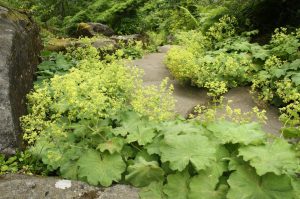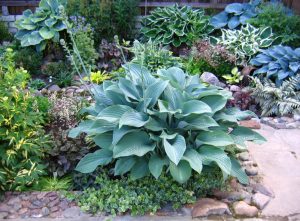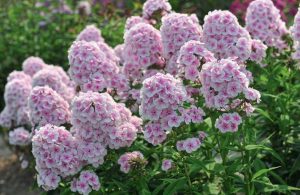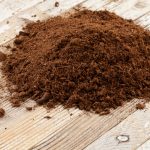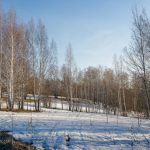Amazing ferns with filigree leaves-fronds with gardeners in a special account. They are able to transform any shady corner and create a magical atmosphere in the garden, similar to the one that reigned in ancient times.
These legendary decorative-leaved perennials fascinate and capture from the moment of their “birth”: young shoots (sometimes not only green in color) appear from the ground twisted like snail shells. Then gradually unfold, turning into openwork fans with an elegant structure.
Ferns are ideal candidates for gardening shady corners in the garden. At the same time, some species rest in winter (their aboveground part dies during cold weather), while others retain their deciduous dress until new shoots appear in the spring or do not lose it at all. Also, our characters differ in height, shades of green and even the structure of vayas-leaf plates-fan.
It is interesting:
Ferns don’t have real leaves. They have leaf plates called vayas. Young, not yet developed vayas, consisting only of the Central vein and petiole, are called rachis. The rachis of these plants are collected when they are still twisted into a snail.
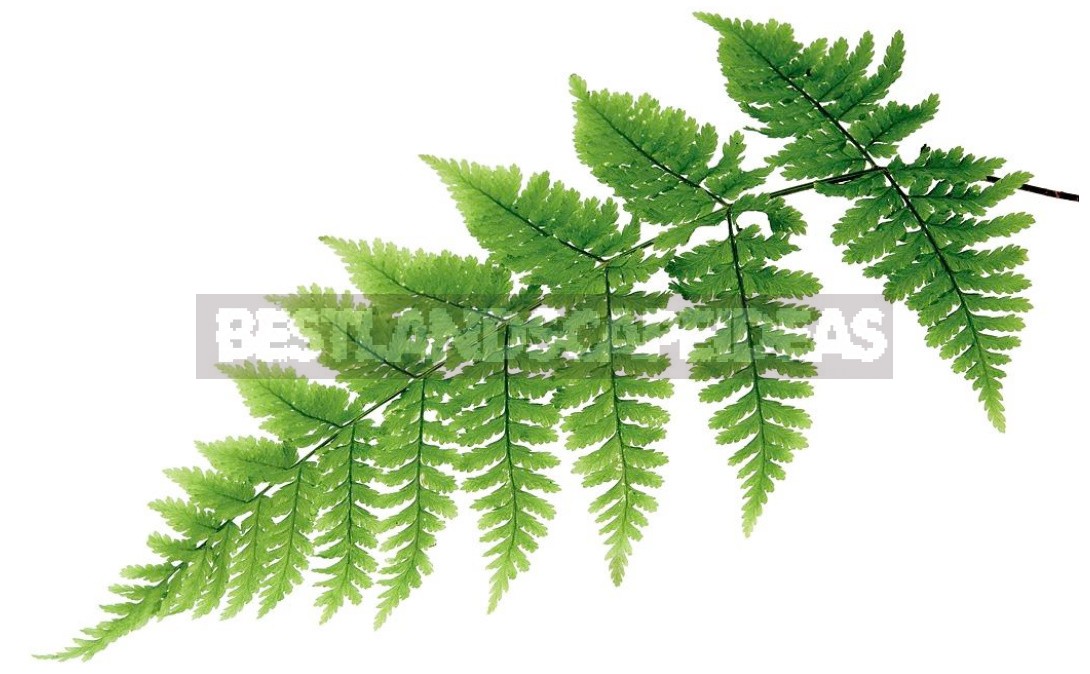
Ferns give airiness to flower beds and due to the variety of colors of leaf plates often serve as the main accents. Thus, the giants Osmunda regalis and Pteridium aquilinum reach a height of two meters and are the first to catch the eye in any landing. One of the most winning leafy outfits can boast Athyrium niponicum: its reddish-silver vayas with a metallic tint in the shade as if they glow. This effect can be enhanced if herbaceous perennials with dark leaves are planted nearby. But undersized species play rather a secondary role: in colorful flower beds, they harmoniously dilute the garish colors.
- Asplenium trichomanes is an elegant candidate for masking dry masonry wall joints. It grows well both in the sun and in partial shade.
- Dryopteris crassirhizoma impresses with wide openwork leaves. The shimmering glow of the fan up to 60 cm long will brighten any dark corner in the garden.

- Selaginella helvetica, very similar to a fern, forms dense low curtins and is considered an excellent groundcover plant.
- Athyrium niponicum ‘Metallicum’ with reddish-silver leaves looks spectacular in any planting. Since the plant prefers slightly acidic soils, it will be an excellent companion for rhododendrons.
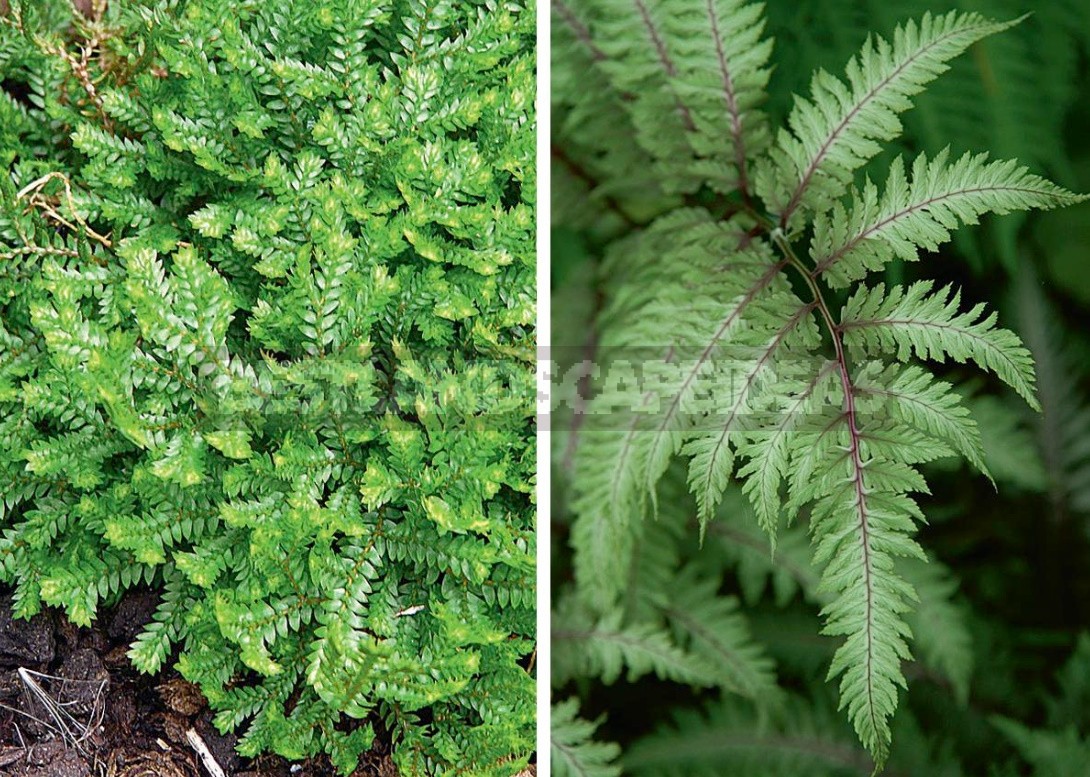
Among the ferns, there are also groundcover species, such as the lovely Adianthum, which spreads like a lush carpet. Such plants often form dense thickets, with which you can create particularly successful transitions both in the flower garden itself and on its border. For example, Blechnum penna-marina gives the border area between the landing and the stone steps a more natural look, smoothing the transition line.
- Adianthum pedatum fascinates the vayas, growing horizontally in tiers. Young shoots have it painted in a bronze color. Vayi on petioles up to 50 cm long are considered a great addition to flower bouquets.
- Phyllitis scolopendrium is interesting because it changes the color of the leaves depending on the light: in the shade they are dark green, but the more light they get, the lighter their color.
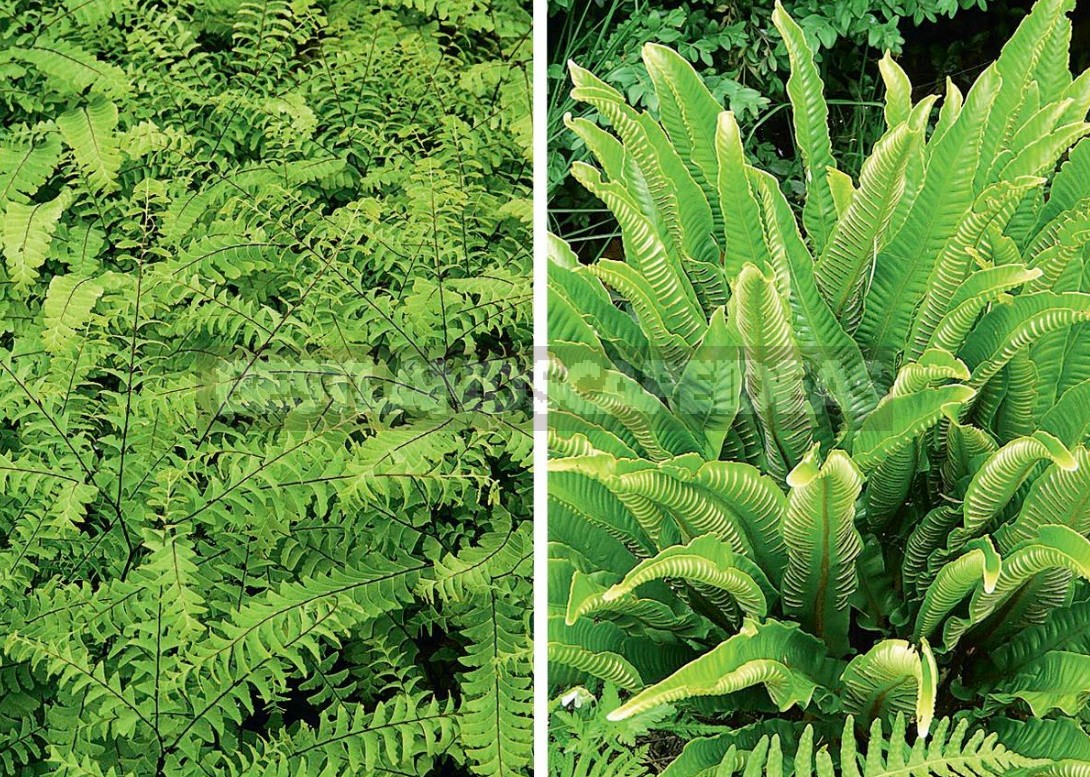
- Dryopteris erythrosora forms reddish-brown young shoots. Later, glossy vayi are developed with a length of 30 to 50 cm.
- Blechum penna-marina is a lovely groundcover plant only 10-20 cm high.

Care features
Ferns prefer humus-rich, loose soil — such as in their natural habitat, in the forest. Such a basis can be recreated in the garden, if you do not remove the fallen leaves in the fall: they serve as a shelter for plants in the winter and, decomposing, improve the composition and structure of the soil. When laying a flower garden, add peat and sand to the soil at the rate of 2:2:1. In the rest of the care for ferns is reduced to applying organic or complex mineral fertilizers in early spring and watering plants in drought.

